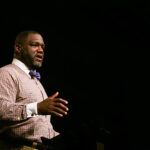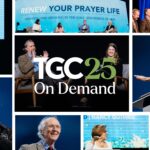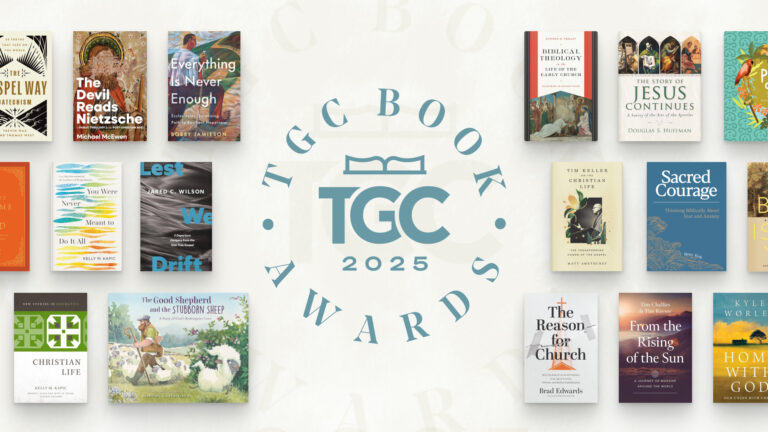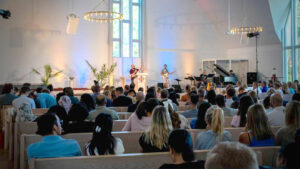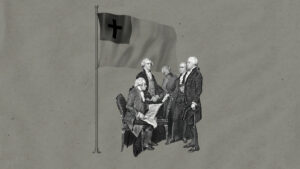Question 1. What is the chief end of man?
Answer. Man’s chief end is to glorify God and to enjoy him forever.
Question 1. What is your only comfort in life and death?
Answer. That I am not my own, but belong—body and soul, in life and in death—to my faithful Savior, Jesus Christ.
Many of you will recognize these words as the opening question and answer of the Westminster and Heidelberg Catechisms. But we’re guessing that a very small number of people will have memorized the entire catechisms from which they derive.
After all, the practice of catechesis, particularly among adults, has been almost completely lost today. It seems so medieval to have children memorizing catechisms, much less doing it as adults. So why did The Gospel Coalition team up with Redeemer Presbyterian Church to develop New City Catechism?
Most people today do not realize that it was once seen as normal, important, and necessary for churches to continually produce new catechisms for their own use. The early Scottish churches, though they had Calvin’s Geneva Catechism of 1541 and the Heidelberg Catechism of 1563, went on to produce and use Craig’s Catechism of 1581, Duncan’s Latin Catechism of 1595, and The New Catechism of 1644, before eventually adopting the Westminster Catechism.
The Puritan pastor Richard Baxter, who ministered in the 17th century town of Kidderminster, was not unusual. He wanted to train heads of families to instruct their households in the faith. To do so, he wrote his own Family Catechism that was adapted to the capacities of his people and that brought the Bible to bear on many of the issues his people were facing at that time.
Three Purposes
Historically catechisms were written with at least three purposes. The first was to set forth a comprehensive exposition of the gospel—-not only in order to explain clearly what the gospel is, but also to lay out the building blocks on which the gospel is based, such as the biblical doctrine of God, of human nature, of sin, and so forth. The second purpose was to do this exposition in such a way that the heresies, errors, and false beliefs of the time and culture were addressed and counteracted. The third and more pastoral purpose was to form a distinct people, a counter-culture that reflected the likeness of Christ not only in individual character but also in the church’s communal life.
When looked at together, these three purposes explain why new catechisms must be written. While our exposition of gospel doctrine must be in line with older catechisms that are true to the Word, culture changes, and so do the errors, temptations, and challenges that we must be equipped to face and answer.
So, with all that in mind, we decided to adapt Calvin’s Geneva Catechism, the Westminster Shorter and Larger Catechisms, and especially the Heidelberg Catechism, to produce New City Catechism. While giving exposure to some of the riches and insights across the spectrum of these great Reformation-era catechisms, New City Catechism also looks at some of the questions people are asking today.
We also decided that New City Catechism should comprise only 52 questions and answers (as opposed to Heidelberg’s 129 or Westminster Shorter’s 107). There is therefore only one question and answer for each week of the year, making it simple to fit into church calendars and achievable even for people with demanding schedules.
We wanted to do one more thing. We found that parents who teach their kids a children’s catechism, and then try to learn an adult one for themselves often find the process confusing. The children are learning one set of questions and answers, and the parents are learning another completely different set. So New City Catechism is a joint adult and children’s catechism. In other words, the same questions are asked of both children and adults, and the children’s answer is always part of the adult answer. This means that as parents are teaching it to their children they are learning their answer to the question at the same time.
Attached to each question and answer there is a short written commentary from a historical preacher (e.g., Augustine, Edwards, Spurgeon, Wesley, etc.) and a short video commentary from some of the council members of The Gospel Coalition (e.g., Don Carson, Mark Dever, Kevin DeYoung, John Piper, etc.) and the pastors of Redeemer Presbyterian Church. So the idea is to read a commentary from a historical preacher and then watch a commentary from a modern one.
Why not commit to memorizing New City Catechism? Visit the website for more information or download the mobile app.
New City Catechism was developed and adapted by Timothy Keller and Sam Shammas from the Reformation catechisms. It comprises 52 questions and answers—therefore there is only one question and answer for each week of the year, making it simple to fit into church calendars and achievable even for people with demanding schedules.
Because parents who teach their kids a children’s catechism, and then try to learn an adult one for themselves often find the process confusing (the children are learning one set of questions and answers and the parents are learning another completely different set), New City Catechism is a joint adult and children’s catechism. In other words, the same questions are asked of both children and adults, and the children’s answer is always part of the adult answer.
Attached to each question and answer there is a short written teaching from a historical preacher (e.g. Augustine, Edwards, Spurgeon, Wesley, etc.) and a short video teaching from a modern one (e.g. Don Carson, Mark Dever, Timothy Keller, John Piper, etc.).
New City Catechism is a joint project between Redeemer Presbyterian Church and The Gospel Coalition.
Download your free Christmas playlist by TGC editor Brett McCracken!
 It’s that time of year, when the world falls in love—with Christmas music! If you’re ready to immerse yourself in the sounds of the season, we’ve got a brand-new playlist for you. The Gospel Coalition’s free 2025 Christmas playlist is full of joyful, festive, and nostalgic songs to help you celebrate the sweetness of this sacred season.
It’s that time of year, when the world falls in love—with Christmas music! If you’re ready to immerse yourself in the sounds of the season, we’ve got a brand-new playlist for you. The Gospel Coalition’s free 2025 Christmas playlist is full of joyful, festive, and nostalgic songs to help you celebrate the sweetness of this sacred season.
The 75 songs on this playlist are all recordings from at least 20 years ago—most of them from further back in the 1950s and 1960s. Each song has been thoughtfully selected by TGC Arts & Culture Editor Brett McCracken to cultivate a fun but meaningful mix of vintage Christmas vibes.
To start listening to this free resource, simply click below to receive your link to the private playlist on Spotify or Apple Music.









